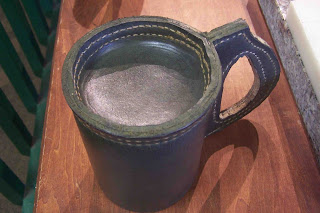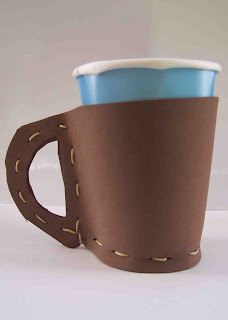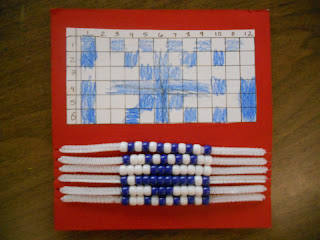I got up early this morning to head out to our town library's annual book sale.
Of course, I went right for the children's book, and $20 later, I was on my way home. I spent the morning sipping coffee and dreaming of art lessons as I looked through my new treasures. Because for me, books = inspiration. I have found this true for my students as well. there's no denying how the illustrations and stories of books can get a child's creative juices flowing, activate background knowledge, and really help concepts hit home.
 |
|
Even as an art teacher, I gather more than just art books. I rarely buy books on technique, but I collect lots and lots of other books. I think of this as job security. Yep, I do. Take a look at my lessons on this blog. My students don't just make a pretty picture to hang above the sofa--art connects to all subjects. So, while I read books to my class to create a rich, multi-sensory learning experience, I am also incorporating math, social studies, science, physical education, music and more into my lessons. When I do this, I inspire and engage my students, and tell everybody, "Art connects to ALL subjects!"
So, what do I look for in a book? Many things, and that is why I have so many books! As I said, I don't have many books on art technique, but if you are a classroom teacher, you may find these helpful. I don't like to own more than I have to, so you may be able to find many "how to" videos and tutorials online.
All of the books I decide to own must have a great story and great visuals (illustrations, photos, etc.). I like books that aren't too wordy and are easy-to-read. Simple picture books I can read word-for-word, but more complex books, I summarize as we look at the pictures. Hey, we need time for art! The pictures should get us talking.
Art/Art Movements/Artists Books
I collect books on artists (such as Van Gogh), art movements (such as Fauvism), and more. I use picture books as read-alouds (sometimes) and grown-up books for reference (I'll show pictures of the artist's work from a grown-up book). I also grab old, worn-out books and rip out the color plates for my files, laminate them for visuals, use them for posters, etc.).
Book About Time Periods/Cultures
Visuals, visuals, visuals! I like folk tales that are nicely illustrated in a style that we'll be applying in class. I love photo books that depict a child from a certain culture moving throughout a typical day. I also grab any of the DK books about a culture or time period. They have lots of great pictures that inspire my art projects!
Math Books
I collect books about math concepts such as counting, shapes, forms, patterns, matching, etc.
Science Books
I am a sucker for a good science book! I collect all sorts of nature-inspired books about insects, plants, animals, etc. Books about the seasons are great, along with more sophisticated science ideas such as optical illusions.
Music Books
There are many great books about music as it relates to art (colors, rhythms, patterns). Some books are illustrated versions of songs and that is cool. I also have a nice little collection of books on how to make musical instruments.
Language Arts Books
I like stories that inspire and have great images. Sometimes the illustrations connect to specific techniques I want to show the children such as collage, cut paper, linocuts, etc. Or deal with themes I think would make great art lessons such as quilting, family history, colors, feelings and more.
Reference Books
As I said above, I grab any DK book about pretty much any subject for reference. I also have visual dictionaries and Nature Encyclopedias. These are helpful when students want to draw a certain type of animal and they want to draw it accurately.
Early Finisher Books
I make most of my books available to my students if they finish early. Usually I'll select a few books that pertain to the theme we are dealing with in art (say, Egypt) and leave them as selections for the children to peruse if they finish early. There are some books, however, that I know I may not use for a lesson, but I grab them specifically for the early-finishers. These would be the I Spy and Can You See What I See series of books.
 |
My loot from today's sale! I think there must be at least 10 art lesson ideas
in this pile of books. And notice my new favorite book: "Paddle-to-the-sea."
I found multiple copies of this classic--enough to share with some
teacher friends of mine. |
How do I get these books?
I'd be broke if I bought all of these books new. So, a couple tips for acquiring books:
- Try it before you buy it. You don't need to have every book! Also, a book that earns rave reviews from one teacher, may leave you flat. Look at the book--will you really use this?
- If you can get it used, do it!
- Be patient! You aren't going to get every book your first year teaching. These things take time. Get what you can as you go and borrow the rest. Gradually add when you can.
My sources for books:
Borrow (FREE): Borrow from other teachers you know, ask your friends and family to lend from their personal collections, and USE YOUR LIBRARY!
Seriously, your library is the best! I have a card at my local library which allows me access to their books and the resources from many other libraries in the consortium they belong to. Intra-library loans do take some time, so you need to plan ahead, but you can borrow movies, books, audio books and more. One library near me even lends artwork.
Also utilize the library at the school you teach at as well as the school you are an alumni of. I can borrow books from my Undergrad library as well as my Graduate school library and the public library in the town I work in. I don't use all of the resources, but I could.
Find it (FREE)! My local transfer station (dump) has a used book area where people can leave books (and keep them out of the landfills). I have found so many resources there--and the return policy is great. When I no longer want the book, I bring it back. Online groups such as freecycle.org are also great--you can join and ask for books (and other resources you need)--who knows, maybe someone out there has something you need that they no longer want.
Go digital (FREE): I'm just starting to use online books, so I know this isn't a huge list. But here are some sites to check out:
(Thank you to Program Associate & Technology Guru, Tiffany Dube at Plymouth State University and Selina Smith at Classroom Magic for their help with this list).
Buy Used ($): Yard sales, book sales, online (craigslist.org, Amazon.com, ebay.com), thrift stores and used book stores such as Goodwill
Buy New (With a Discount)($$): If you shop online, you can get reduced pricing on new books and some places have free shipping if you buy enough. You can go to publishing house sales (get on their mailing lists and they'll let you know when they are having sales). You can go in with a group of teachers and get a group discount. Discount/overstock stores such as Building 19 and Ocean State Job Lot also have new books for a couple dollars each.
How do you get the books you need for your classroom? Do you know source for great children's books to read online? Please share your sources here and help fellow teachers out!



















